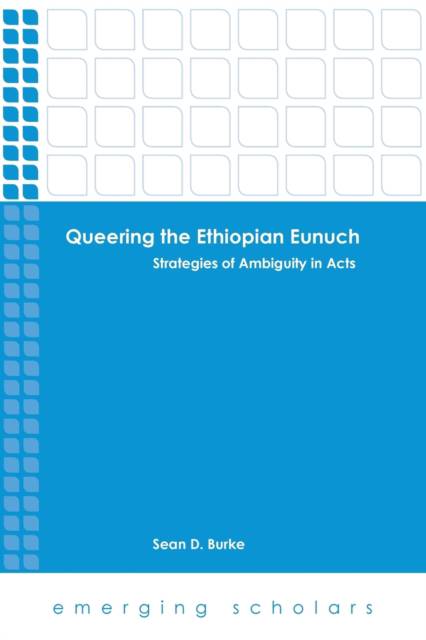
- Afhalen na 1 uur in een winkel met voorraad
- In januari gratis thuislevering in België
- Ruim aanbod met 7 miljoen producten
- Afhalen na 1 uur in een winkel met voorraad
- In januari gratis thuislevering in België
- Ruim aanbod met 7 miljoen producten
Queering the Ethiopian Eunuch
Strategies of Ambiguity in Acts
Omschrijving
Were eunuchs more usually castrated guardians of the harem, as florid Orientalist portraits imagine them, or were they trusted court officials who may never have been castrated? Was the Ethiopian eunuch a Jew or a Gentile, a slave or a free man? Why does Luke call him a man while contemporaries referred to eunuchs as unmanned beings? As Sean D. Burke treats questions that have received dramatically different answers over the centuries of Christian interpretation, he shows that eunuchs bore particular stereotyped associations regarding gender and sexual status as well as of race, ethnicity, and class. Not only has Luke failed to resolve these ambiguities; he has positioned this destabilized figure at a key place in the narrativeas the gospel has expanded beyond Judea, but before Gentiles are explicitly namedin such a way as to blur a number of social role boundaries. In this sense, Burke argues, Luke intended to queer his readers expectations and so to present the boundary-transgressing potentiality of a new community.
Specificaties
Betrokkenen
- Uitgeverij:
Inhoud
- Aantal bladzijden:
- 192
- Taal:
- Engels
- Reeks:
Eigenschappen
- Productcode (EAN):
- 9781451465655
- Verschijningsdatum:
- 1/08/2013
- Uitvoering:
- Paperback
- Formaat:
- Trade paperback (VS)
- Afmetingen:
- 154 mm x 229 mm
- Gewicht:
- 294 g

Alleen bij Standaard Boekhandel
Beoordelingen
We publiceren alleen reviews die voldoen aan de voorwaarden voor reviews. Bekijk onze voorwaarden voor reviews.








